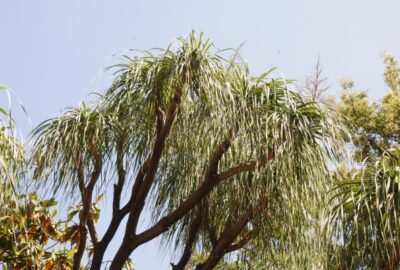
The Ponytail Palm in Giardini di Piazza Umberto I, Bari
This post is also available in:
 Italiano (Italian)
Italiano (Italian)
In the gardens of Piazza Umberto I in Bari, there is a botanical rarity (officially acknowledged as one of the Monumental Trees of Puglia): it’s a Nolina recurvata (now called Beaucarnea recurvata), commonly known as the “ponytail palm” or the “smoke-eating plant”. It’s a caudiciform and decorative species, which has managed to grow very slowly and reach a trunk circumference of 9.8 ft., with a height of 14.7 ft.
Beaucarnea recurvata
– description
The ponytail palm is an evergreen plant, which tends to look like a tree whose stem originates vertically from an enlarged base, similar to an elephant foot, more than 9.8 ft. in diameter and featuring 10 or more branches developed vertically. The bark is usually dark grey, sometimes brown-grey and divided into polygonal plates. The leaves are green, gathered in rosettes placed at the end of the branches and tend to take on a drooping, fountain-like appearance – they also show a finely toothed edge very hard to see with the naked eye.
The flowering occurs between May and July, featuring male and female flowers on two different tree genders: the small flowers can reach the size of 0.03-0.11 inches.
– biology and ecology
This species originally comes from Mexico but is also widespread in Belize and Guatemala, where it usually reaches the height of 30 ft, occasionally soaring up to 50.
It randomly grows in dry and thorny tropical forms, preferring bright places, although the direct sunlight may damage its leaves.
– importance and use
The name “smoke-eating plant” comes from this species resistance to smoke: a peculiar feature often observed during the rites performed with bonfires by of the indigenous peoples of Central America.
This post is also available in:
 Italiano (Italian)
Italiano (Italian)
Contatti
Piazza Umberto I - 70131 Bari(BA)
